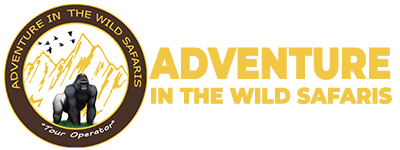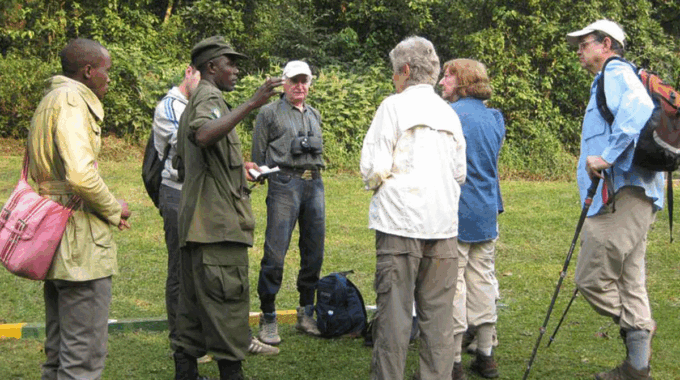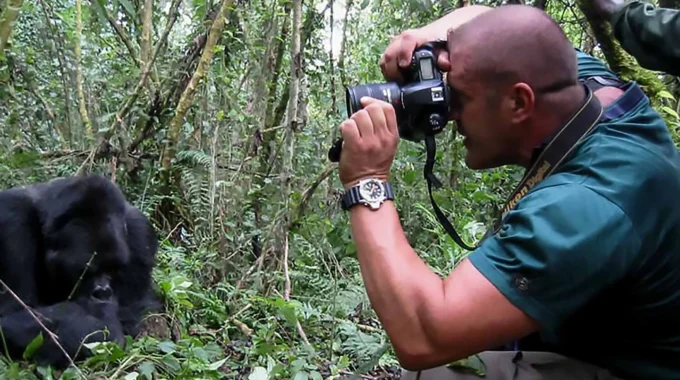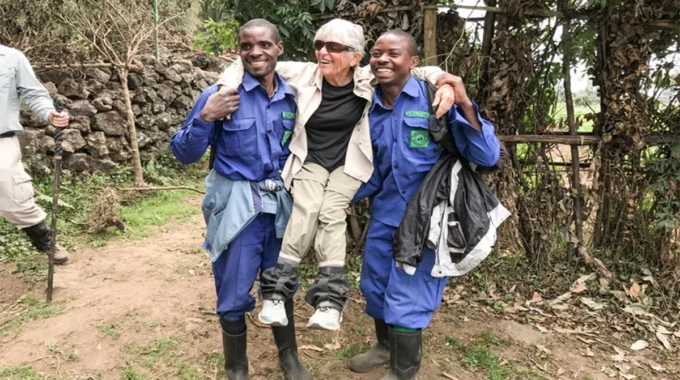Safety Measures and Health Precautions During Treks: Safety measures during gorilla treks Safety measures during…
Physical Fitness Requirements for Gorilla Trekking in Rwanda
Physical Fitness Requirements for Gorilla Trekking in Rwanda
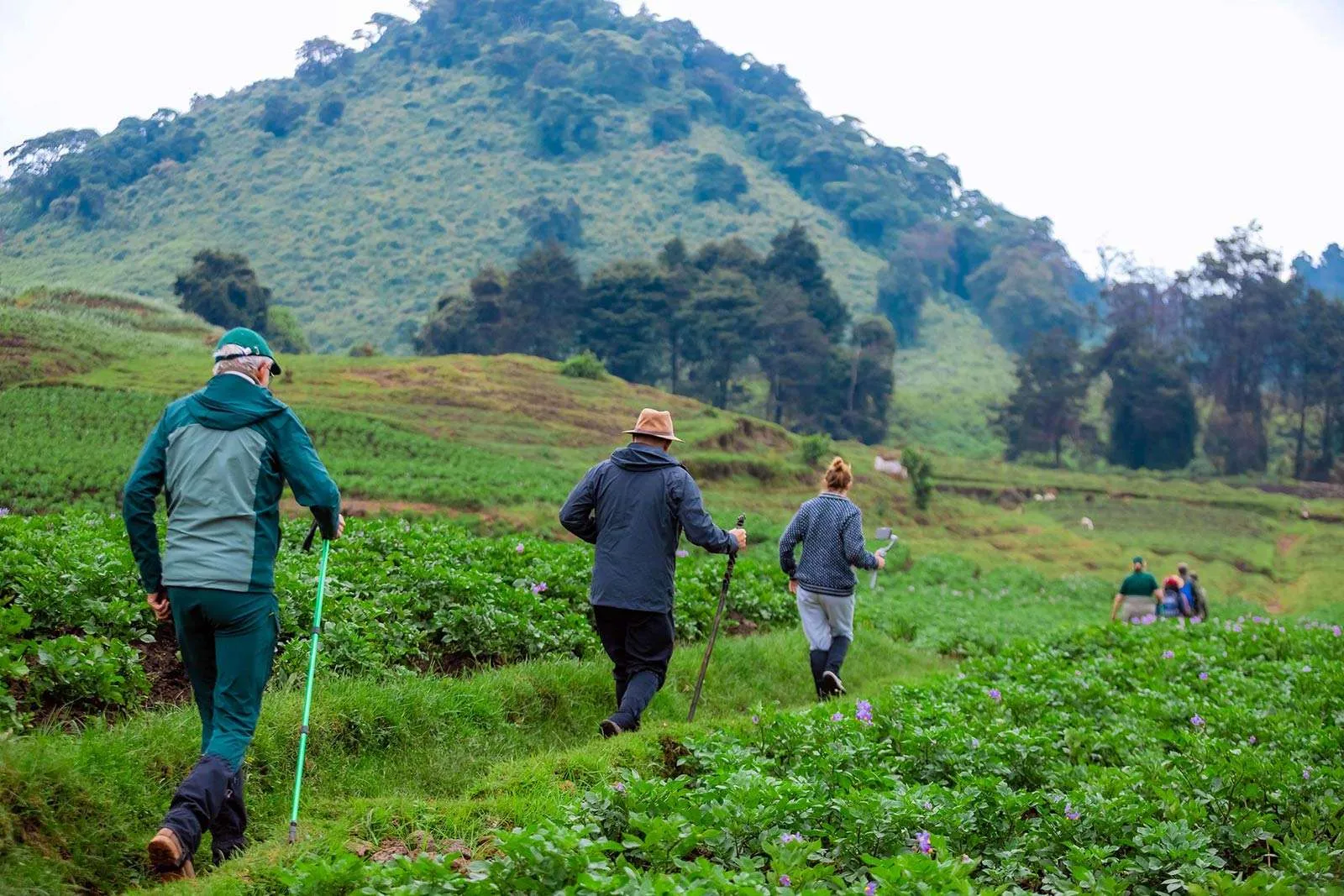
Physical fitness for gorilla trekking: Gorilla trekking in Rwanda is a bucket-list adventure that offers a rare and intimate encounter with endangered mountain gorillas in their natural habitat. But while the experience is profoundly rewarding, it also demands a certain level of physical fitness and endurance.
This guide provides a comprehensive look at the physical fitness requirements for gorilla trekking, along with tips to help you prepare and assess your ability to participate. Whether you’re a seasoned hiker or a first-time trekker, understanding the physical demands ahead of time is essential for a safe and enjoyable experience.
Why Physical Fitness Matters
Trekking to see gorillas in Volcanoes National Park is not a simple walk in the woods. It can involve:
- Hiking 2 to 6 hours (sometimes longer) depending on gorilla location
- Climbing steep, muddy, and uneven terrain
- Navigating through dense forests at high altitudes (2,500–3,000 meters)
- Enduring humid and rainy conditions
Being physically fit allows you to:
- Keep pace with your group
- Avoid injury or fatigue
- Fully enjoy the once-in-a-lifetime encounter without struggling physically
What Level of Fitness Is Required?
There are no formal fitness tests, but the Rwanda Development Board recommends that participants have a moderate to good level of physical fitness. Here’s what that means in practical terms:
1. Stamina and Endurance
Expect to walk continuously for 2 to 6 hours at a slow to moderate pace, often uphill. Treks vary in length, but having cardiovascular endurance is critical.
Tip: If you can comfortably walk 10 km (6 miles) with some elevation, you’re likely ready.
2. Leg and Core Strength
You’ll be using your legs and core muscles to:
- Climb inclines
- Step over rocks, logs, and mud
- Maintain balance on slippery trails
Include squats, lunges, and core workouts in your pre-trek fitness routine.
3. Flexibility and Balance
Trekking poles help, but having a good sense of balance reduces your risk of slipping or falling. Gentle stretching and yoga can improve flexibility.
Altitude Considerations
Volcanoes National Park sits at a high altitude. You may feel:
- Shortness of breath
- Mild headaches
- Fatigue even during short walks
Prepare for altitude by:
- Arriving a day or two early to acclimatize
- Staying well-hydrated
- Avoiding alcohol before your trek
Can Older Adults or Less Fit Travelers Participate?
Yes — but with preparation. Gorilla trekking is accessible to most people who are reasonably fit. If you are:
- Over 60
- Carrying extra weight
- Recovering from injury or illness
…consult with your doctor in advance and let your tour operator know.
Tips for Older or Less Fit Trekkers
- Request a shorter trek group (inform park staff on the day of trekking)
- Hire a porter to carry your backpack and assist you
- Use walking sticks or poles for extra support
Training Tips: How to Prepare Physically
Start preparing at least 6–8 weeks before your trek. Focus on the following:
1. Cardio Workouts
Include:
- Brisk walking or hiking
- Jogging or cycling
- Stair climbing
Do this 3–5 times a week for 30–60 minutes.
2. Strength Training
Build leg and core muscles with:
- Squats and lunges
- Planks and bridges
- Resistance training
3. Flexibility and Stretching
- Daily stretching routines
- Yoga or Pilates
- Balance exercises
4. Practice Hikes
If possible, go on real hikes with a daypack to simulate trekking conditions. Aim to carry at least 5–7 kg (11–15 lbs).
Should You Hire a Porter?
Absolutely. Hiring a porter is highly recommended for all trekkers regardless of fitness level. Porters can:
- Carry your gear (camera, water, rain jacket, etc.)
- Help you navigate rough sections
- Provide physical support when needed
Porters cost around $10–$20 USD, and tipping is encouraged. It also directly supports the local community.
What If You Have a Health Condition?
If you have a medical condition (e.g., asthma, heart disease, joint issues), speak with your doctor well before your trip. Bring any necessary medication and inform your tour operator and park rangers in advance.
Physical Fitness Myths: Busted
| Myth | Truth |
|---|---|
| “Only athletes can do this” | Most moderately fit people can trek with preparation |
| “It’s a flat walk” | The trails are often steep, uneven, and muddy |
| “I don’t need to train” | Training improves stamina, safety, and enjoyment |
Mental Fitness Also Matters
Gorilla trekking is not just physically demanding—it’s mentally demanding too. You may face:
- Early morning starts
- Long drives to the park
- Unexpected delays or trail challenges
Keeping a positive mindset and staying mentally prepared is just as important.
Final Checklist: Are You Trek-Ready?
- ✅ Can walk 6–10 km on hills
- ✅ Comfortable with uneven terrain
- ✅ Have basic strength and balance
- ✅ Have trained for endurance
- ✅ Cleared by a doctor (if needed)
- ✅ Ready for high altitude hiking
If you answered yes to most of the above, you’re ready to trek!
Book with an Operator Who Understands Your Needs
A knowledgeable tour operator like Gorilla Rwanda Safaris can:
- Assess your fitness level
- Recommend an appropriate trekking group
- Provide pre-trek fitness tips
- Arrange porters and walking sticks
Conclusion
You don’t need to be an ultra-marathoner to go gorilla trekking, but you do need to be reasonably fit, prepared, and flexible. A few weeks of training and realistic expectations will set you up for success.
With the right fitness and mindset, your encounter with mountain gorillas will be one of the most powerful, life-affirming experiences of your lifetime.
Suggested Internal Links
- What to Pack for a Gorilla Trekking Adventure
- How to Book a Gorilla Trekking Permit in Rwanda
- Understanding the $1,500 Gorilla Trekking Permit Fee
- Best Time of Year for Gorilla Trekking in Rwanda
